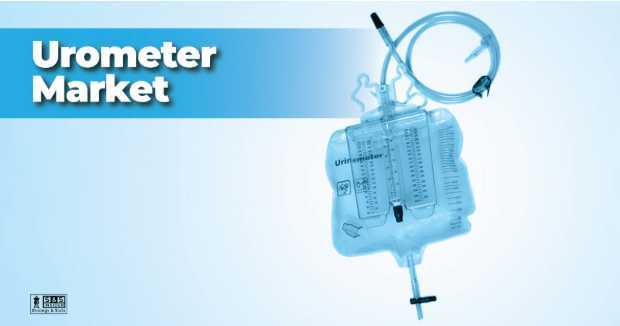Urometer Market Overview
The global urometer market is witnessing consistent growth as the prevalence of kidney disorders and urinary tract complications continues to rise worldwide. Valued at USD 529.42 million in 2023, the market is expected to reach USD 987.77 million by 2032, expanding at a CAGR of 7.21% from 2024 to 2032. This growth reflects the increasing adoption of urometers in hospitals, clinics, and home healthcare settings, driven by a focus on patient monitoring accuracy, infection control, and early detection of renal dysfunction.
Urometers, essential devices for measuring urine output in critically ill patients or those undergoing major surgeries, are becoming standard in modern medical practices. The rising burden of chronic kidney diseases, catheter-associated infections, and growing awareness about urine output monitoring are fueling product demand.
Market Dynamics: Key Drivers and Restraints
The urometer market growth is primarily propelled by the increasing global incidence of kidney diseases, with diabetes and hypertension being leading causes of renal dysfunction. According to various healthcare reports, over 10% of the global population suffers from chronic kidney disease (CKD), with rising hospital admissions necessitating effective fluid management systems. Urometers play a crucial role in such cases, ensuring accurate and sterile urine measurement.
Another key driver is the growing rate of hospital-acquired infections (HAIs). Healthcare providers are increasingly shifting toward closed-system urometers that minimize infection risks associated with indwelling catheters. Moreover, the aging global population and the expansion of critical care units in hospitals have led to increased usage of urometers for post-surgical and palliative care patients.
However, the market faces restraints such as pricing pressures and lack of standardization across developing regions. The availability of low-cost substitutes and limited awareness in low-income countries could hinder market penetration. Additionally, the risk of infection due to improper catheter use remains a challenge for healthcare providers, requiring consistent training and protocol enforcement.
Emerging Opportunities and Market Challenges
The market presents promising opportunities in product innovation and integration of digital monitoring systems. The ongoing shift toward smart healthcare solutions is leading manufacturers to develop urometers with real-time digital data recording and wireless connectivity features. These advancements enable clinicians to track patient output remotely, facilitating early detection of complications and reducing clinical workload.
Additionally, expanding home healthcare adoption offers another growth avenue. As the number of patients opting for at-home postoperative recovery rises, the demand for easy-to-use, hygienic urometer systems is expected to surge. This trend is especially prevalent in developed markets like North America and Europe, where healthcare systems are transitioning toward value-based care models.
On the flip side, regulatory challenges and stringent device approval processes may delay product launches. Manufacturers must comply with multiple quality assurance standards, including FDA, CE, and ISO certifications, which can be resource-intensive. Moreover, environmental concerns related to single-use plastic-based urometers are prompting manufacturers to explore sustainable materials and recycling initiatives.
Segmentation Insights
The Urometer Market is segmented by product type, application, and end-use.
By Product Type, the market includes 100 ml, 200 ml, 400 ml, 450 ml, and 500 ml variants, with the 500 ml urometers dominating due to their suitability in extended critical care monitoring.
By Application, operative procedures and emergency trauma care collectively hold the largest share, driven by high hospital admission rates and the need for real-time urine output assessment during and after surgeries. Palliative care is another fast-growing segment, as these patients often require continuous monitoring for hydration balance and renal function.
By End-use, hospitals remain the dominant segment due to high patient volume and the availability of advanced urinary monitoring infrastructure. However, home healthcare is emerging as a significant end-use category, supported by increasing patient preference for in-home recovery and cost-efficient treatment solutions.
Regional Analysis
The regional landscape of the Urometer Market shows a strong presence in North America, followed by Europe and Asia Pacific.
North America leads the global market due to the high prevalence of chronic kidney diseases, strong reimbursement systems, and the adoption of advanced medical devices. The U.S. and Canada continue to invest heavily in infection prevention measures and critical care infrastructure.
Europe represents a mature market characterized by technological innovation and an aging population. Countries like Germany, France, and the UK are key contributors, with rising hospital capacities and growing awareness of urinary output monitoring systems.
The Asia Pacific region is anticipated to witness the fastest CAGR during the forecast period. Rapid healthcare infrastructure development in countries such as China, India, and Japan, coupled with an expanding patient pool, is driving adoption. Moreover, growing investments in public health programs and an increase in private hospital chains are strengthening regional growth.
The Middle East, Africa, and Latin America markets are gradually expanding as healthcare spending increases, and awareness of renal health management improves. Nations like Brazil, Saudi Arabia, and South Africa are witnessing increased imports of urometer devices due to government-led healthcare modernization initiatives.
Competitive Landscape
The urometer market features a mix of established players and emerging manufacturers focusing on product innovation and distribution expansion. Key market participants include:
Becton, Dickinson and Company (BD)
Medline Industries, Inc.
Teleflex Incorporated
B. Braun Melsungen AG
Cardinal Health, Inc.
Cook Medical
Amsino International, Inc.
Hollister Incorporated
Coloplast
Medtronic plc
Other notable players such as ConvaTec Group plc, Flexicare Medical Limited, Nipro Medical Corporation, and Vyaire Medical Inc. are emphasizing product differentiation through ergonomic designs, infection-resistant materials, and digital integration.
Strategic collaborations, mergers, and acquisitions are also shaping the competitive environment. For instance, manufacturers are entering partnerships with hospitals and home healthcare agencies to ensure streamlined supply chain logistics and consistent product availability.
Future Outlook
The global urometer market outlook remains positive as hospitals and clinics increasingly prioritize infection control, real-time monitoring, and patient comfort. The transition toward smart, connected medical devices will further transform urine output measurement and management systems. By 2032, the industry is expected to become more data-driven, with digital healthcare ecosystems integrating urometer data for predictive analytics and clinical decision-making.


















